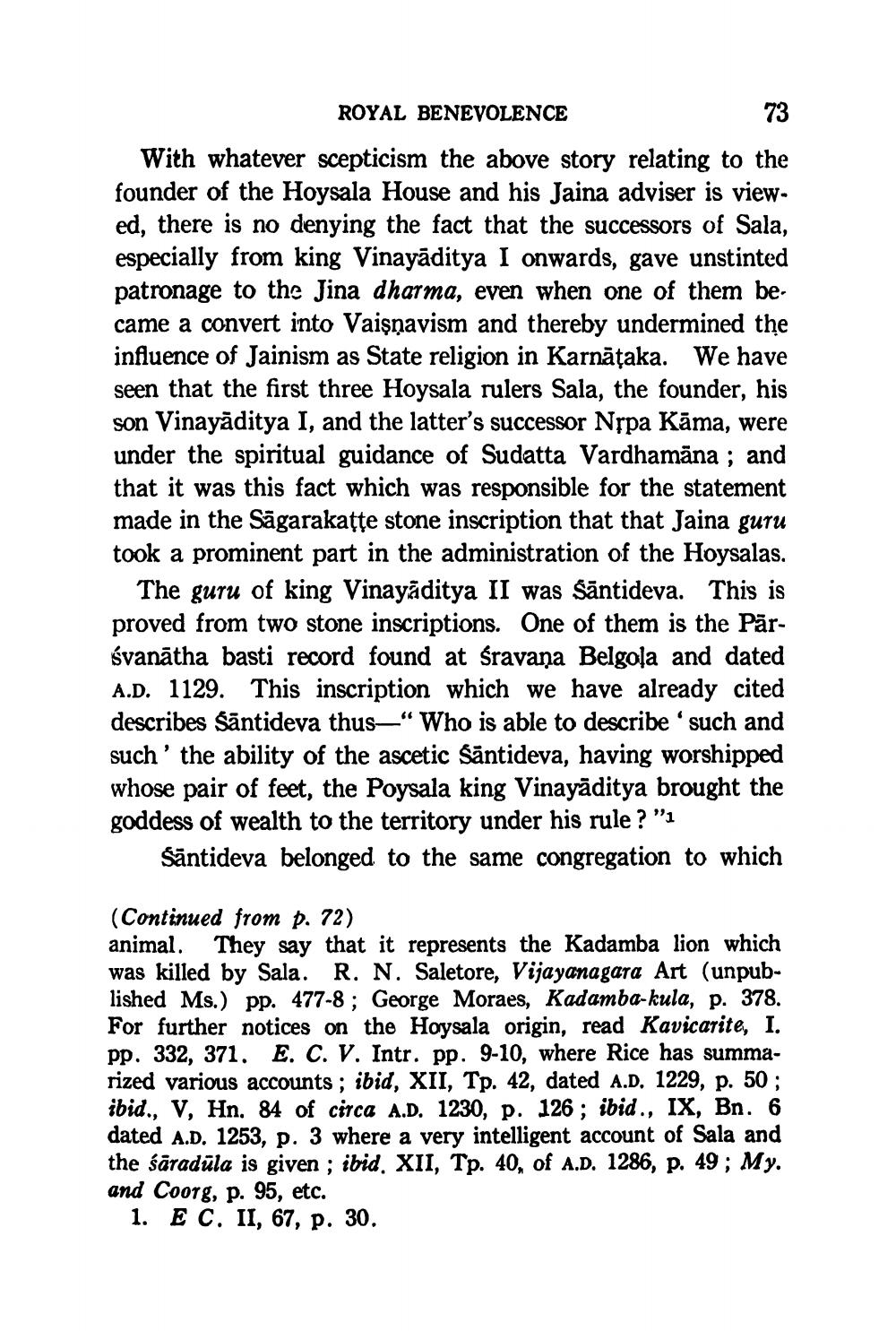________________
ROYAL BENEVOLENCE With whatever scepticism the above story relating to the founder of the Hoysala House and his Jaina adviser is viewed, there is no denying the fact that the successors of Sala, especially from king Vinayāditya I onwards, gave unstinted patronage to the Jina dharma, even when one of them be. came a convert into Vaişņavism and thereby undermined the influence of Jainism as State religion in Karnataka. We have seen that the first three Hoysala rulers Sala, the founder, his son Vinayāditya I, and the latter's successor Nrpa Kāma, were under the spiritual guidance of Sudatta Vardhamana ; and that it was this fact which was responsible for the statement made in the Sāgarakatte stone inscription that that Jaina guru took a prominent part in the administration of the Hoysalas.
The guru of king Vinayāditya II was Sāntideva. This is proved from two stone inscriptions. One of them is the Pārśvanātha basti record found at śravana Belgola and dated A.D. 1129. This inscription which we have already cited describes Sāntideva thus—“Who is able to describe such and such' the ability of the ascetic Sāntideva, having worshipped whose pair of feet, the Poysala king Vinayāditya brought the goddess of wealth to the territory under his rule ? "1
śāntideva belonged to the same congregation to which
(Continued from p. 72) animal. They say that it represents the Kadamba lion which was killed by Sala. R. N. Saletore, Vijayanagara Art (unpublished Ms.) pp. 477-8; George Moraes, Kadamba-kula, p. 378. For further notices on the Hoysala origin, read Kavicarite, I. pp. 332, 371. E. C. V. Intr. pp. 9-10, where Rice has summarized various accounts; ibid, XII, Tp. 42, dated A.D. 1229, p. 50; ibid., V, Hn. 84 of circa A.D. 1230, p. 126 ; ibid., IX, Bn. 6 dated A.D. 1253, p. 3 where a very intelligent account of Sala and the śāradūla is given ; ibid. XII, Tp. 40, of A.D. 1286, p. 49; My. and Coorg, p. 95, etc.
1. E C. II, 67, p. 30.




